 W
WThe culture of Galicia is the patterns of human activity and symbolism associated with the Galicia region of Spain and the Galician people.
 W
WAs Burgas are hot springs in the historic center of Ourense, in Galicia, Spain. They include Burga do Medio, which is infused with gas, Burga de Arriba and a Burga de Abaixo. The waters are similar to those of Carlsbad, and gush from granite rock to the west of the town at almost the boiling point. The hot mineral waters gush at 80 gallons per minute.
 W
WThe Basilica of Saint Mary Major in Pontevedra, Spain, is a catholic church, dating from the 16th century, and consecrated as a basilica on January 10, 1962, by decree of Pope John XXIII. It is currently considered a BIC. It was declared a historic-artistic monument belonging to the National Artistic Treasure by decree of 3 June 1931. ·
 W
WBeltane is the Gaelic May Day festival. Most commonly it is held on 1 May, or about halfway between the spring equinox and summer solstice. Historically, it was widely observed throughout Ireland, Scotland, and the Isle of Man. In Irish the name for the festival day is Lá Bealtaine, in Scottish Gaelic Latha Bealltainn and in Manx Gaelic Laa Boaltinn/Boaldyn. It is one of the four Gaelic seasonal festivals—along with Samhain, Imbolc and Lughnasadh—and is similar to the Welsh Calan Mai.
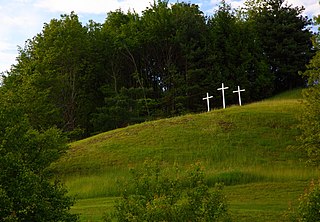 W
WA calvary is a type of monumental public Christian cross, sometimes encased in an open shrine. Wayside crosses with or more commonly without sculpture can also be found in Devon e.g. the Dartmoor Crosses and Cornwall and in other parts of Britain referred to as High Crosses. Usually a calvary has three crosses, that of Jesus Christ and those of impenitent thief and penitent thief.
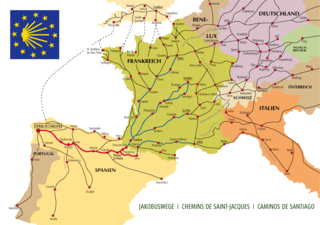 W
WThe Camino de Santiago, known in English as the Way of St. James, is a network of pilgrims' ways or pilgrimages leading to the shrine of the apostle Saint James the Great in the cathedral of Santiago de Compostela in Galicia in northwestern Spain, where tradition holds that the remains of the apostle are buried. As Pope Benedict XVI said, "It is a way sown with so many demonstrations of fervour, repentance, hospitality, art and culture which speak to us eloquently of the spiritual roots of the Old Continent." Many follow its routes as a form of spiritual path or retreat for their spiritual growth. It is also popular with hiking and cycling enthusiasts and organized tour groups.
 W
WCastañada, Magosto or Magusto, is a traditional festival in the Iberian Peninsula. It is popular in Portugal and some areas of northern Spain, such as Galicia, Cantabria, Asturias and the provinces of León, Zamora and Salamanca and Cáceres. It is additionally celebrated in parts of the Canary Islands. The festival is also celebrated across Catalonia on both sides of the French-Spanish border. It has also spread internationally as a 'chestnut party'. Etymological origins are unknown, but there are several theories for the Magosto name: Magnus Ustus or Magum Ustum.
 W
WCastro culture is the archaeological term for the material culture of the northwestern regions of the Iberian Peninsula from the end of the Bronze Age until it was subsumed by Roman culture. It is the culture associated with the Gallaecians and Astures.
 W
WThe Celtic Revival was a variety of movements and trends in the 19th and 20th centuries that saw a renewed interest in aspects of Celtic culture. Artists and writers drew on the traditions of Gaelic literature, Welsh-language literature, and so-called 'Celtic art'—what historians call Insular art. Although the revival was complex and multifaceted, occurring across many fields and in various countries in Northwest Europe, its best known incarnation is probably the Irish Literary Revival. Irish writers including William Butler Yeats, Lady Gregory, "AE" Russell, Edward Martyn, Alice Milligan. and Edward Plunkett stimulated a new appreciation of traditional Irish literature and Irish poetry in the late 19th and early 20th century.
 W
WThe church of the Pilgrim Virgin is a scallop-shaped chapel located in the city of Pontevedra, in Spain, along the route of the Portuguese Way of St. James.
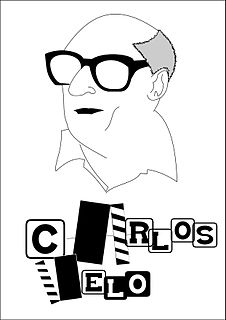 W
WCinematography in Galicia is in the main in Galician language, although there is also a minority done in Spanish and Portuguese.
 W
WThe Codex Calixtinus is the main witness for the 12th-century Liber Sancti Jacobi, or the Book of Saint James. It is a pseudepigraph attributed to Pope Callixtus II; its principal author or compilator is referred to as "Pseudo-Callixtus", often identified with French scholar Aymeric Picaud. Its most likely date of compilation is the period of 1138–1145.
 W
WColiseum da Coruña is an indoor arena for concerts and shows used in A Coruña, Galicia, Spain. The venue holds 11,000 people for concerts. It was designed by Japanese architect Arata Isozaki, built in 1990 and open on August 12, 1991. It is also occasionally used for ice skating and bull fighting.
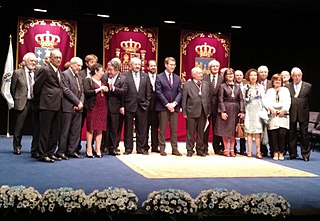 W
WGalician Literature Day is a public holiday observed in Galicia, Spain. It is a celebration of the Galician language and its literature which was inaugurated by the Royal Galician Academy in 1963. This celebration has taken place on May 17 each year since 1963. In the year 1991 Galician Literature Day was declared a public holiday in all Galicia.
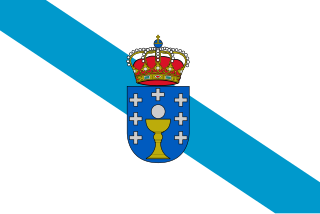 W
WDia Nacional de Galicia is when the autonomous community of Galicia in Spain celebrates its national holiday. It falls on 25 July.
 W
WThe Cans Festival is an annual short film festival held in the parish of Cans that coincides with the near-homophonous Cannes Film Festival. The festival is organized by the Arela Cultural Association and coordinated by the scriptwriter Alfonso Pato.
 W
WThe Hostal dos Reis Católicos, also called the Hostal de Los Reyes Católicos or Parador de Santiago, is a 5-star Parador hotel, located in the Praza do Obradoiro, Santiago de Compostela, Galicia, Spain. The hotel was constructed as a religious work in 1486, by Ferdinand and Isabel, the Catholic Monarchs. It is widely considered the oldest continuously operating hotel in the world, and has also been called the "most beautiful hotel in Europe".
 W
WJogo do pau, 'lit. game of the stick' is a Galician and Portuguese martial art which developed in the regions along the Minho River: Minho, Trás-os-Montes, Pontevedra and Ourense, focusing on the use of a staff of fixed measures and characteristics. The origins of this martial art are disputed, but its purpose was primarily self-defence. It was also used to settle arguments and matters of honour between individuals, families, and even villages. While popular in the northern mountains, it was practically unknown elsewhere, and those who did practice it were taught by masters from the North of Portugal and Galicia.
 W
WLatín dos canteiros or verbo dos arginas is an argot employed by stonecutters in Galicia, Spain, particularly in the area of Pontevedra, based on the Galician language. They handed down their knowledge in the art of how to split and cut stone by means of this secret language to the next generation.
 W
WMendinho, also Meendinho, Mendiño and Meendiño, was a medieval Iberian poet.
 W
WThe National Museum of Archaeology is the largest archaeological museum in Portugal and one of the most important museums devoted to ancient art found in the Iberian Peninsula. Located in Lisbon, the museum was founded in 1893 by the archaeologist José Leite de Vasconcelos. The museum is located in the western wing of the Jeronimos Monastery where the monks had their dormitory. The museum is built in the Neo-Manueline style and was officially opened in 1906.
 W
WOrtigueira, a seaport and borough in County Ferrolterra in Galicia, celebrates its patron saint day -Saint Martha of Ortigueira's Day- on 29 July.
 W
WA Pazo is a type of Galician traditional house. Similar to a manor house, pazos are usually located in the countryside, as former residences of important people in the community. They were of crucial importance in the 17th to 19th centuries, related to rural and monastic architecture and the system of feudal organization, and they constituted a type of local management unit around which the life of the villagers revolved. Over time they become the social symbol and refuge of the noble class, which Otero Pedrayo portrayed in his novels in early 20th century.
 W
WPig slaughter is the work of slaughtering domestic pigs which is both a common economic activity as well as a traditional feast in some European and Asian countries.
 W
WNunca Máis is the name and slogan of a popular movement in Galicia (Spain) formed in response to the Prestige ship environmental disaster in 2002. The movement's banner is based on the Galician flag, but with a blue diagonal on a black field, rather than a blue diagonal on a white field. The movement describes itself as representing a broad swathe of civil society.
 W
WThe Feira Franca is a medieval festival held in Pontevedra (Spain) on Friday afternoon and Saturday of the first weekend in September. It is set in the Middle Ages and includes a medieval market, a chivalry tournament, falconry shows, food stalls, street entertainment, juggling, music, workshops, leather, wood, textile and natural products crafts, and more.
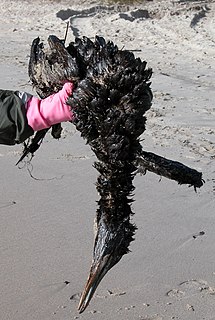 W
WThe Prestige oil spill occurred off the coast of Galicia, Spain, caused by the sinking of the 26 year old structurally deficient oil tanker MV Prestige in November 2002, carrying 77,000 tonnes of heavy fuel oil. During a storm, it burst a tank on November 13, and French, Spanish, and Portuguese governments refused to allow the ship to dock. The vessel subsequently sank on November 19, 2002, about 210 kilometres (130 mi) from the coast of Galicia. It is estimated that it spilled 60,000 tonnes or a volume of 67,000 m3 (17.8 million US gal) of heavy fuel oil. The spill polluted thousands of kilometers of coastline and more than one thousand beaches on the Spanish, French and Portuguese coast, as well as causing great harm to the local fishing industry. The spill is the largest environmental disaster in the history of both Spain and Portugal. The amount of oil spilled was more than the Exxon Valdez incident and the toxicity considered higher, because of the higher water temperatures.
 W
WRapa das Bestas is the name of an operation that involves cutting the manes of the wild horses who live free at the mountains in a semi-feral state and that are performed in the curros held in various locations in Galicia (Spain). Those horses live in mountains owned by the villages and have several owners, each year the foal are marked and the adults shaved and deloused, and then freed again to the mountains.
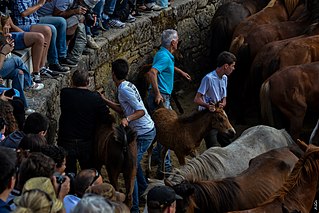 W
WA rapa das bestas is the name given to the annual curro (roundup) of wild horses celebrated the first Friday, Saturday, Sunday, and Monday of July in Sabucedo, Pontevedra, Spain.
 W
WThe Ravachol parrot lived in Pontevedra, Spain, between 1891 and 1913. It was the pet of the pharmacist Perfecto Feijoo. It became one of the symbols of the city.
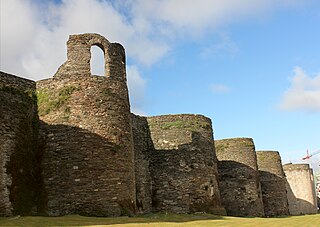 W
WThe Roman walls of Lugo were constructed in the 3rd century and are still largely intact, stretching over 2 kilometers around the historic centre of Lugo in Galicia (Spain). The fortifications were added to UNESCO's World Heritage List in late 2000 and are a popular tourist attraction.
 W
WThe Santiago de Compostela Archcathedral Basilica is part of the Metropolitan Archdiocese of Santiago de Compostela and is an integral component of the Santiago de Compostela World Heritage Site in Galicia, Spain. The cathedral is the reputed burial place of Saint James the Great, the apostle of Jesus Christ. It is also one of the only three remaining churches in the world built over the tomb of an apostle of Jesus, the other two being St. Peter's Basilica in Vatican City and St. Thomas Cathedral Basilica, Chennai in India.
 W
WThe Seminar of Galician Studies was an institution established in 1923 with the purpose of studying and promoting the Galician cultural heritage.
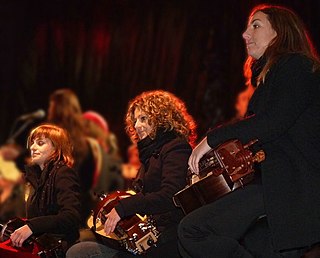 W
WSonDeSeu is the first folk and traditional music orchestra from Galicia, Spain, and it is also considered to be one of the first European contemporary folk orchestras. It is constituted by 53 members and conducted by Rodrigo Romaní.
 W
WThe Public Library of Pontevedra Antonio Odriozola located in Pontevedra (Spain) is part of the Public Library Network of Galicia and the State Public Library Network (BPE). Its management has been transferred to the Autonomous Community of Galicia through the Department of Culture of the Galician Government.
 W
WA trainera is a traditional boat of the Cantabrian sea coast at the southern end of the Bay of Biscay, propelled by oars, and formerly sailing. It is a boat of fine lines with raised prow and rounded stern, to resist the waves of the Cantabrian sea. Traineras were originally used by fishermen to bring in the day’s catch of anchovies and sardines from sea to market, usually competing to sell their caught fish before others came in. Today, this historical tradition has become a major sport of coastal boat racing.
 W
WTrezenzonio was a Galician monk who lived in times of the Asturian monarchy. Tradition attributes the deed of seeing and even visiting one of the islands of Paradise to him. His adventures were summoned in the Trezenzonii de Solistitionis Insula Magna, a medieval manuscript written in Latin in the 12th century.